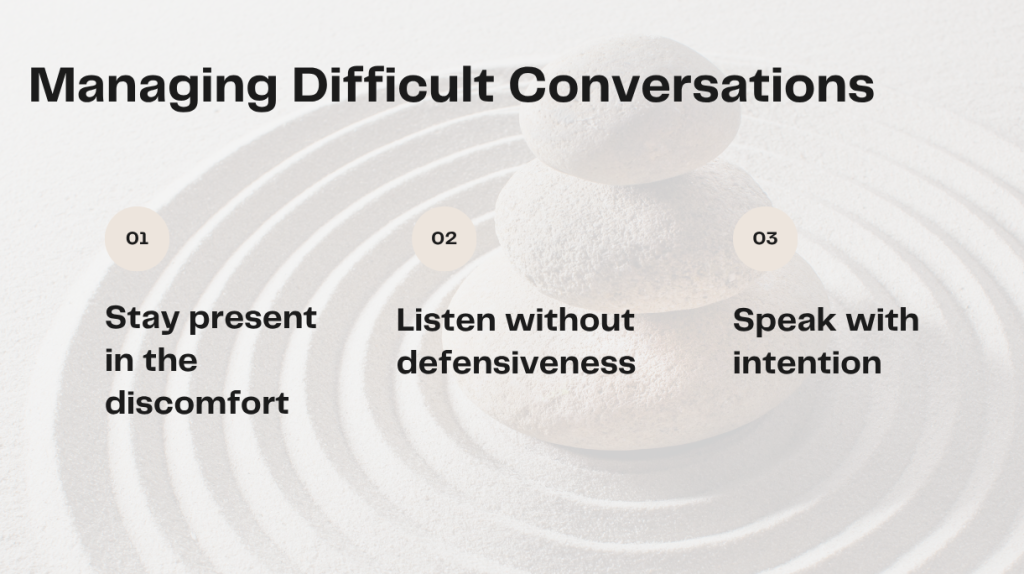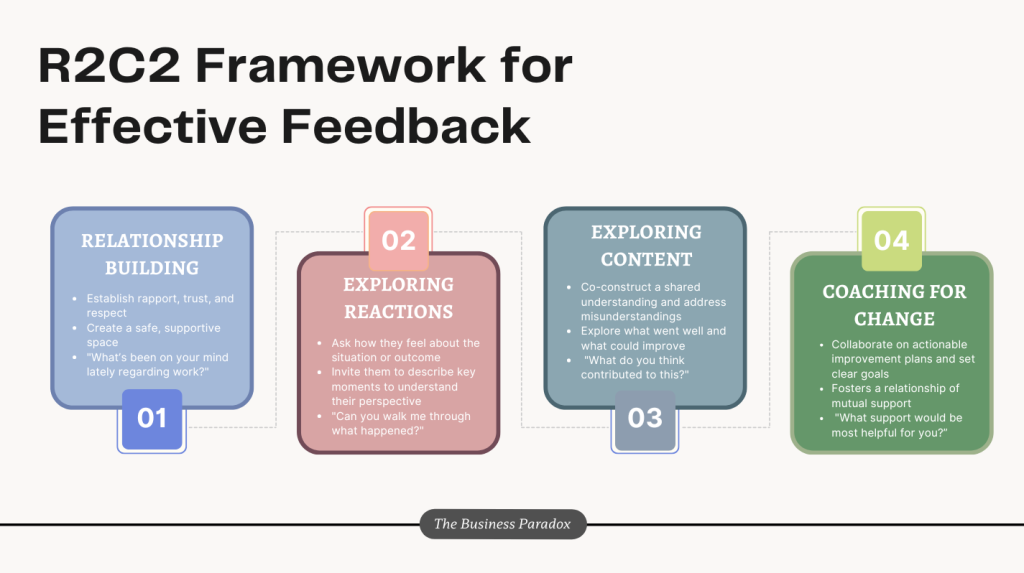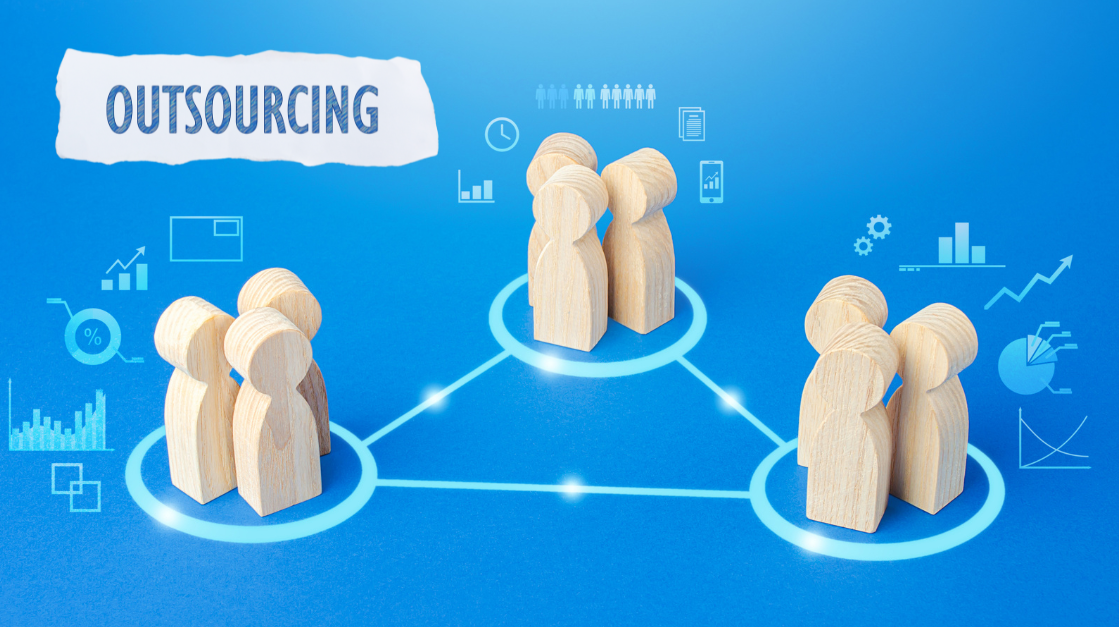How to Prepare For Feedback Conversations
In our previous article, we explored the power of self-awareness. This week, we dive into the art of navigating tough conversations and exchanging feedback with clarity and care. Giving and receiving feedback are deeply intertwined with self-awareness and emotional intelligence in the workplace. Before stepping into any feedback conversation, preparation rooted in self-awareness is essential. Understanding our own emotions, triggers, and behavioral patterns helps us approach feedback calmly and confidently.
Self-aware leaders consider the recipient’s emotional state, while emotionally intelligent individuals manage their reactions, viewing feedback as an opportunity for growth rather than criticism. More importantly, when feedback is exchanged within a culture of trust, it fosters constructive dialogue, vulnerability, and mutual respect, thereby creating stronger workplace relationships. In this article, we’ll explore how applying emotional intelligence can make feedback conversations less daunting. This means turning potentially uncomfortable moments into valuable development experiences.
We’re All Part Of The Feedback Loop
To meaningfully interact with others is to engage with feedback. If we are building a project, leading a team, learning, or simply showing up and participating, we are already in the business of giving and receiving feedback. This ranges from casual comments to formal evaluations, from team meetings to awkward silences. No matter who we are, whether we are an entry-level employee, a team lead, a freelancer, or a CEO, feedback is unavoidable.
Feedback works in the same way as a GPS, it helps recalculate the route when we’re off track. It shows us where we are, highlights where we’re falling short, and points to what needs to change to reach our goal. Without it, we risk going in circles. But feedback isn’t just valuable for the person receiving it, it also reflects something about the person giving it. Taking the time to offer thoughtful input is a way to connect, to show investment in someone else’s growth. Giving honest feedback says, “I care enough to help you improve.” That simple act builds trust, respect, and stronger teams.
Dealing with Disagreements and Difficult Conversations
In our modern self-help culture, the mantra of “protect your peace” is often used to justify tuning out criticism or avoiding uncomfortable conversations. Yet, in professional and personal growth, feedback is essential and it requires the ability to sit with discomfort. Disagreement, tension, and honest feedback are inevitable in any workplace where people are working toward something meaningful. When we avoid having these difficult conversations, we may feel more comfortable in the moment, but we slow down growth and weaken our relationships. In fact, some of the most valuable insights come from moments that challenge our ego.

It’s not the lack of conflict that defines a healthy work environment, but the willingness to face it with courage and empathy. Adopting a win-win mindset allows people to move beyond defensiveness and power struggles, shifting the focus from being right to getting it right together. Instead of treating conflict as a zero-sum game, a win-win approach asks: How can we walk away with something valuable? It’s about leaning into conflict with the shared goal of reaching a satisfactory outcome for everyone involved. This approach encourages openness, mutual respect, and creative problem-solving.
When handling difficult conversations, it’s important to focus on specific behaviours that we’ve noticed rather than making assumptions about a person’s character. This helps us avoid the common pitfall known as the fundamental attribution error: the tendency to attribute someone’s actions to their personality while overlooking external factors that might be influencing their behaviour. Instead of assuming someone is “lazy” or “careless,” consider that errors can stem from unclear instructions, a lack of support, or unrealistic timelines, along with other factors outside their control. By refocusing feedback onto observable outcomes (e.g., “This project missed the deadline by two days”), we can create space for a more constructive dialogue. We can start by asking open questions like, “Can you help me understand what challenges you faced?” or “What do you think would help prevent this in the future?”
How to Receive Feedback Without Defensiveness
Let’s be honest, receiving feedback from others isn’t easy. If we’ve invested time and effort into a project, hearing that our performance didn’t hit the mark will sting. It’s completely normal to feel defensive or uncomfortable in those moments. No one enjoys being told they didn’t do something well. One helpful approach is to separate our feelings from the facts. Instead of reacting right away, try to take a deep breath and mentally separate how the feedback makes us feel from what it’s actually saying.
It is especially tough when feedback is delivered harshly or at the wrong moment, which can trigger strong emotions in us. That’s why it’s crucial to be self-aware of our emotional triggers in order to stay calm and respond thoughtfully rather than reacting impulsively. We have to consider that the delivery of feedback often reflects the speaker’s style, not the accuracy of their message. When we view feedback as insight, we gain control over what we take from it and how we move forward.
The real power of feedback lies in what we choose to do next. Instead of staying stuck in past mistakes, shift the conversation toward future improvement. Ask forward-focused questions like:
- “What’s one thing I could do differently next time to improve?”
- “How can I start to practice or apply this at work?”
- “Are there specific actions or results you’d like to see more of?”
This “feedforward” approach helps us create actionable, forward-looking goals. The key is to move from vague takeaways to specific steps that we can apply in real situations. Shifting from “What went wrong?” to “What can I improve?” reframes feedback as a catalyst for growth. It transforms our role from a passive recipient to an active driver of our own development.
How to Give Feedback That Actually Helps
How can we make giving feedback easier? The key is to foster a culture of psychological safety where mistakes and feedback are seen as essential opportunities for growth. In the absence of trust, even well-intentioned feedback can feel like criticism and it’s more likely to be dismissed or provoke resistance. Building solid relationships is the key starting point for giving constructive feedback. People are naturally more open to listening, reflecting, and acting on feedback when they believe the giver respects and understands them.
Effective feedback isn’t just about what we say, it’s also about creating the right conditions for that message to be received, understood, and acted on. Central to this is leveraging relationship-centered approaches that emphasise trust and rapport, turning potentially difficult conversations into collaborative exchanges. The R2C2 model offers a practical structure for achieving this by fundamentally shifts feedback from a rigid, one-way critique to a dynamic, two-way conversation.

This approach deliberately balances accountability with empathy:
- Relationship Building (R1): Build trust and create a safe space so feedback feels supportive.
- Exploring Reactions (R2): Understand the receiver’s feelings and perspectives to foster openness.
- Exploring Content (C1): Clarify facts and meaning to ensure shared understanding.
- Coaching for Change (C2): Collaborate on actionable steps that empower growth.
This approach shifts the discomfort into a productive pathway for development, ensuring the feedback strengthens both performance and professional relationships.
Conclusion: Feedback as a Tool for Connection
When feedback is part of the everyday workflow, not just a response to issues, it becomes a catalyst for connection and progress. Having regular and thoughtful conversations help teams stay aligned, supported, and continuously improving. Establishing a bedrock of trust, empathy, and mutual respect is essential for any feedback exchange.
It’s important to recognise that feedback, even when it comes from someone we don’t fully agree with, is rarely intended as a personal attack. More often, it offers a different lens and sometimes, the reflection it prompts is more powerful than the feedback itself. In most cases, the act of giving feedback signals care, for the work, for the team, and for your success. When we treat feedback not as a threat but as an invitation, it becomes one of the most valuable tools we have to grow.
Stay ahead with exclusive insights! Sign up for our mailing list and never miss an article. Be the first to discover inspiring stories, valuable insights and expert tips – straight to your inbox!




